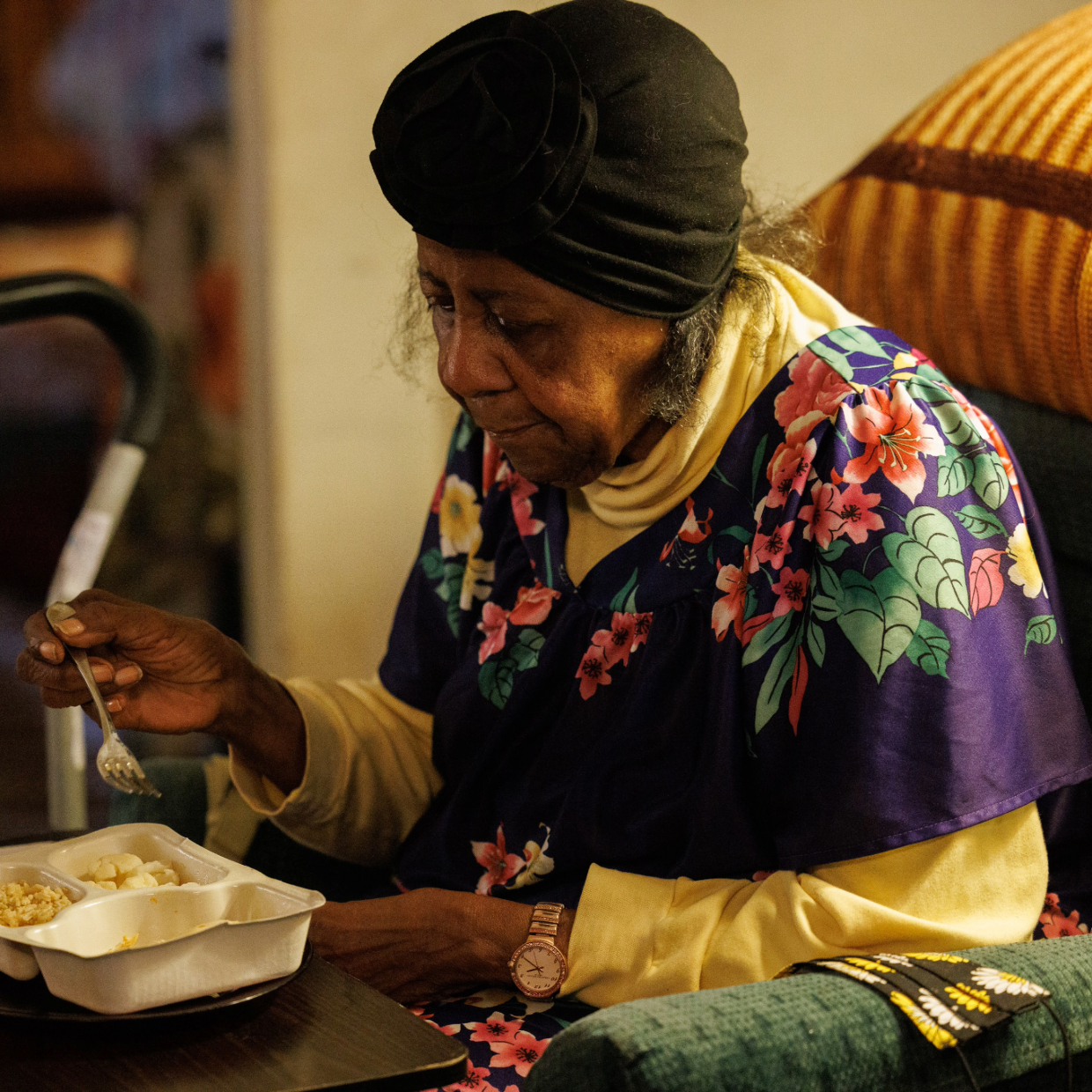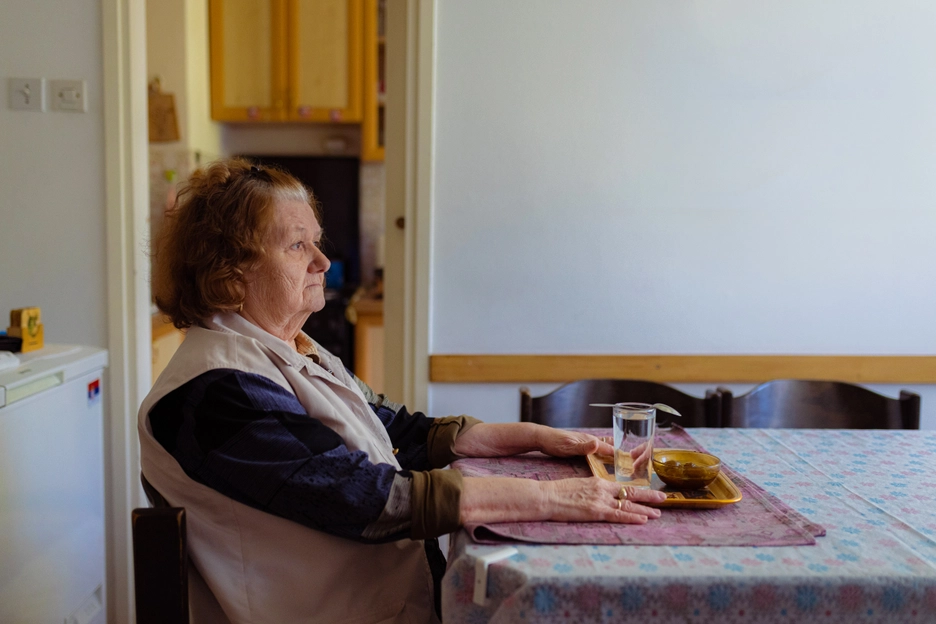No one should go hungry. Yet, nearly 13 million seniors — 1 in 8 — worry about where their next meal will come from, also known as food insecurity.
Food insecurity refers to the lack of consistent access to enough food for an active, healthy life. It’s not just about whether someone is hungry at the moment, but also whether they have reliable access to food over time. It’s also a condition that can lead to hunger and malnutrition.
These problems are even worse for homebound seniors. They struggle with mobility, food access and meal prep. Getting to the store can be hard due to mobility issues or lack of transportation. Sometimes, they just don’t have enough money to buy healthy food regularly.
We know that good nutrition is the cornerstone of a healthy life. Yet, hunger and malnutrition among seniors in America are a growing crisis.
13M seniors worry about having enough food
2.6x higher rate of food insecurity among the Black senior population than the White senior population
1 in 5 older adults in rural areas worry about having enough food

Hunger: The Struggle for Enough to Eat
Millions of older adults across the U.S. face hunger every day due to food insecurity. When seniors can’t get enough food or struggle to access healthy meals, it affects their health. Food insecurity can lead to mental health issues like depression and anxiety.4 Worrying about their next meal makes life harder for these seniors.
Food insecurity among seniors is caused by many factors, but the root cause is often financial barriers.5 Many older adults live on fixed incomes. They often have to choose between paying for health care, utilities or food.
Want to learn more about the challenges and opportunities of an aging America? Check out our national and state fact sheets for key insights into the growing senior population.
I usually go buy what’s on sale, but what’s on sale isn’t always good for you. And the stuff that’s good for you doesn’t really ever go on sale.Meals on Wheels client
Malnutrition: The Risks of Not Getting the Right Food
Malnutrition happens when someone doesn’t get the right nutrients and calories to stay healthy. It can happen both when there isn’t enough food and when there isn’t access to the right kinds of food.
Even if seniors have regular meals, they can still miss important nutrients. Older adults are at higher risk of malnutrition due factors like decreased appetite, mobility issues and prescription medications.6
As we get older, our bodies change. Seniors need fewer calories but more nutrients like protein, fiber and vitamins to stay strong and healthy. Changes in appetite, taste and digestion can make it hard to get the nutrients they need. And for many seniors, difficulty shopping, cooking or chewing can also stand in the way.
Malnourished seniors are more likely to get sick, spend more time in the hospital and require costly long-term care.7
Nutrition
Every day, Meals on Wheels providers deliver nutritious, age-appropriate meals to their homebound senior neighbors. They help seniors stay healthy and continue to enjoy life in the homes and communities they love.
Learn How We Deliver Essential NutritionHelp Us End the Wait™
The Meals on Wheels network is uniquely positioned to deliver nutritious meals, care and connection to the older adults who need us most. But the demand keeps growing: Right now, 1 in 3 Meals on Wheels providers has a waitlist. Together, we can End the Wait and ensure that every senior who needs Meals on Wheels gets it.
Citations
- Nearly 13 million seniors are threatened by or experience hunger: Cited from Meals on Wheels America analysis of data from the December 2023 Current Population Survey Food Security Supplement. Data include adults age 60 and older who were categorized as having experienced “marginal food security,” “Low food security” and/or “Very low food security.” Custom data table available at Census.gov
- Food insecurity among the Black and Hispanic senior populations: Cited from Meals on Wheels America Analysis of the December 2023 Current Population Food Security Supplement. Data are for adults age 60 and older in 2023. Hispanic persons included in people of any race. Custom tables available at Census.gov
- Nearly 1 in 5 older adults in rural areas worry about having enough food: Cited from Meals on Wheels America calculations from the 2023 CPS Food Security Supplement. Data include adults age 60 and older who were categorized as having experienced “marginal food security,” “Low food security” and/or “Very low food security.” Data available at Census.gov
- Ziliak, J., Gundersen, C. (August 2021). The Health Consequences of Senior Hunger in the United States: Evidence from the 1999-2016 NHANES. Report for Feeding America. Available from Feeding America: https://www.feedingamerica.org/research/senior-hunger-research
- Tucher EL, Keeney T, Cohen AJ, Thomas KS. Conceptualizing Food Insecurity Among Older Adults: Development of a Summary Indicator in the National Health and Aging Trends Study. J Gerontol B Psychol Sci Soc Sci. 2021 Nov 15;76(10):2063-2072. doi: 10.1093/geronb/gbaa147. PMID: 33001172; PMCID: PMC8599055
- The Gerontological Society of America; National Academy on an Aging Society. Profiles of an Aging Society: What We Know and Can Do About Malnutrition. Washington, DC: The Gerontological Society of America; Fall 2015.”
- Norman, K., Pichard, C., Lochs, H., & Pirlich, M. (2008). Prognostic impact of disease-related malnutrition. Clinical Nutrition, 27(1), 5–15. https://doi.org/10.1016/j.clnu.2007.10.007

